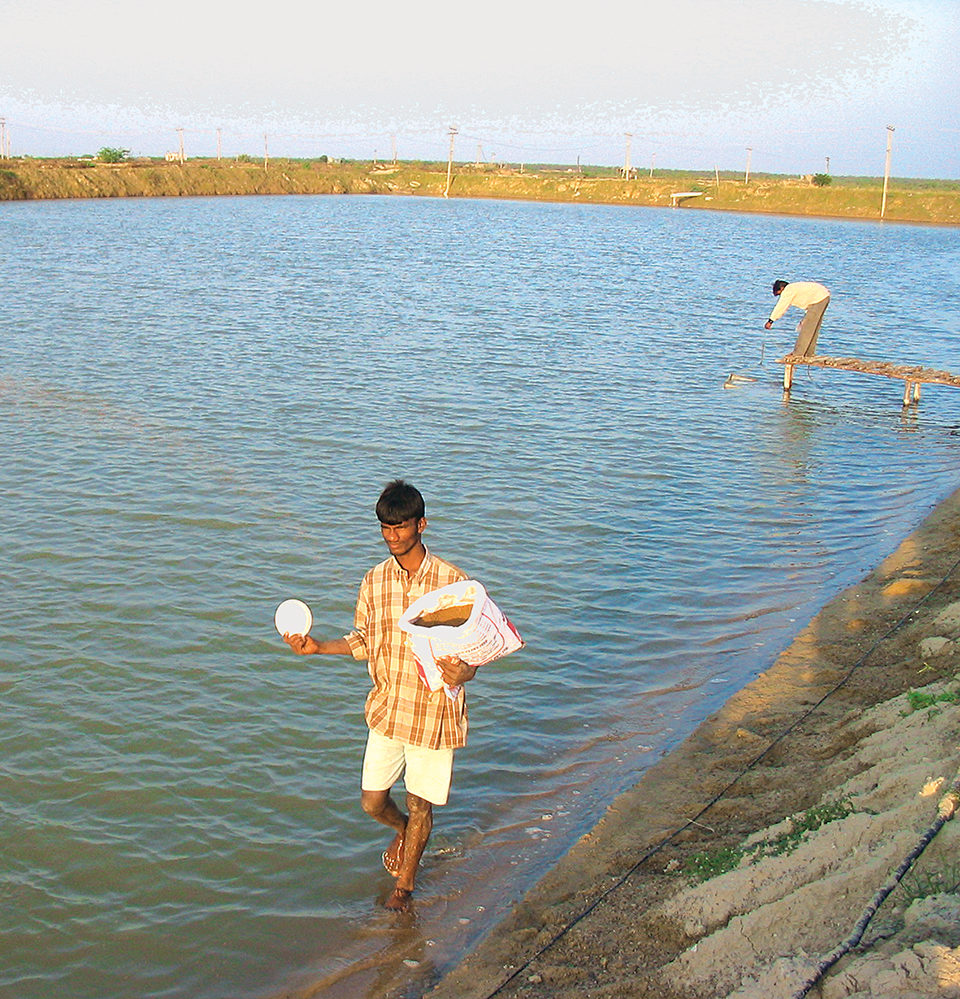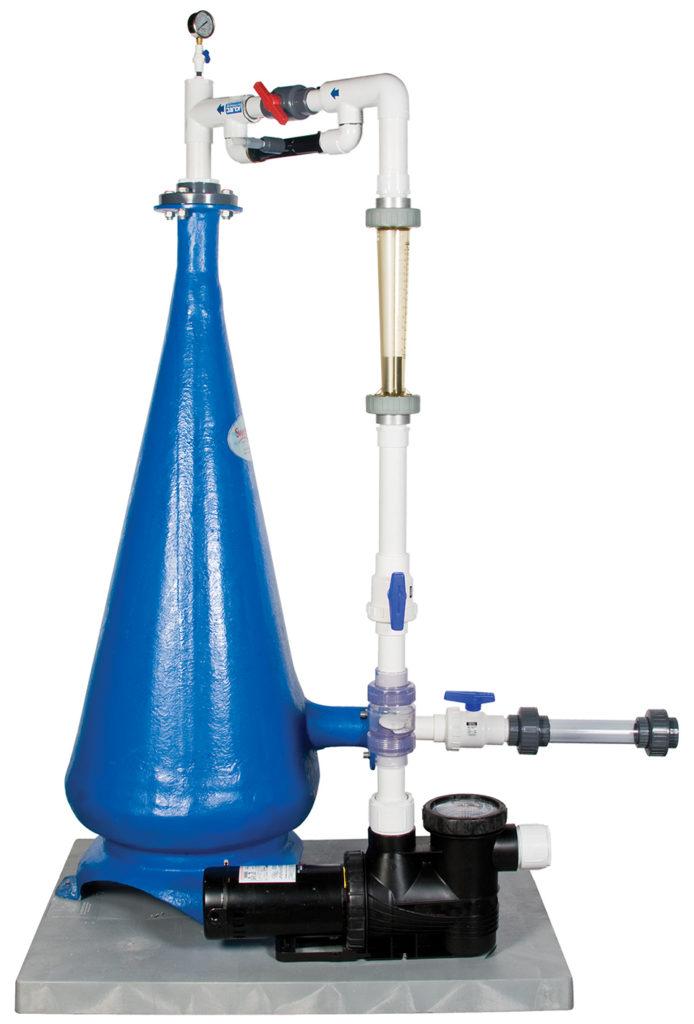Consider both cost and performance

There has been a major shift in the thinking of shrimp farmers in Asia over the past five years from a focus on purely technical issues to those driven by the market. Obviously, technical issues such as disease management remain important and are a greater priority in some countries, but many farmers consider diseases a “business risk” that can be managed through greater attention to biosecurity and good management practices.
Reduce costs
In the past few years, discussions among farmers and shrimp industry specialists in many Asian countries have been dominated by market-related topics such as shrimp prices, export markets, competition, trade practices, antidumping, food safety and traceability. The rising prices of farm inputs, raw materials, and feed are further concerns.
Previously, these issues were of minor importance to farmers, since prices were high, margins were good, and there was little need to focus on cost efficiency. With the pressure on prices, however, farmers who have seen their profit margins shrink now continually look to reduce costs.
Maximize profits
Rather than strictly focusing on cost reduction, it is better to focus on cost efficiency with the aim of maximizing profit. Cost reduction can be a component of profit-oriented approaches, but it must be carefully thought through to ensure that it does not sacrifice profitability.
One common error is to focus on the cost of a product without considering performance. In a simple example, buying cheap feed can turn out to be a costly option if the end results are higher feed-conversion ratios and reduced growth, both of which impact the profitability of a farm. Overall feed cost can be less, but the cost of feed per kilogram of shrimp produced is higher. Growth rates can also be impacted and affect the bottom line when shrimp are smaller at harvest or require more time to reach the preferred market size.
Actual costs
Another common mistake is to compare similar products by price per volume without taking into account the percentage of active ingredients or cost of application. Sometimes cheap products contain the same active ingredient as more expensive products, but at a lower concentration. The different concentrations naturally dictate different use rates, so it is important to compute overall application costs that include both material and labor for a desired end result to get a true idea of the potential cost benefit of the “cheaper” product.
Feed costs
Feed is the most expensive input in shrimp production and also the one that has the greatest impact on performance. Consequently, farmers rightly put a great deal of effort into controlling and managing feed costs. Unfortunately, feed millers are faced with raw material costs that continue to rise.
The costs of fishmeal, fish oil, and soybean meal – three of the most important constituents of shrimp feeds – have been rising due to limited global supply and competition for the raw materials from aquaculture and other food-producing industries. Indeed, the cost of protein for animal feeds has been recognized as a major constraint in animal husbandry, and great efforts are being made to identify alternative protein sources and increase the efficiency of existing supplies.
Protein content
Many shrimp producers use the crude protein content of feeds as a means of evaluating feed quality. Feeds with higher crude protein levels are often considered better than those with less protein.
This tends to oversimplify the situation, since it is not just the crude protein level that is important, but the quality and digestibility of the protein and, more importantly, the balance of amino acids in the protein. If the amino acid balance is wrong for the species being cultivated, or the protein digestibility is low, growth rates will suffer, regardless of the crude protein content.
Protein efficiency
In nutrition, there is increasing interest in protein efficiency ratios, the rates at which dietary protein is converted into animal weight. A good protein efficiency ratio (PER) indicates that a high proportion of the protein is converted to body weight.
Another important consequence of the emphasis on high crude protein levels without considering PER is that with low PER, much of the protein will be lost to the aquatic environment. The nitrogen in this lost protein ultimately ends up as ammonia that can cause environmental problems in ponds. Dealing with the problems caused by high ammonia generation can reduce the profitability of pond culture, so it is in farmers’ interests to look for better protein utilization, rather than just high protein levels.
(Editor’s Note: This article was originally published in the April 2005 print edition of the Global Aquaculture Advocate.)
Now that you've reached the end of the article ...
… please consider supporting GSA’s mission to advance responsible seafood practices through education, advocacy and third-party assurances. The Advocate aims to document the evolution of responsible seafood practices and share the expansive knowledge of our vast network of contributors.
By becoming a Global Seafood Alliance member, you’re ensuring that all of the pre-competitive work we do through member benefits, resources and events can continue. Individual membership costs just $50 a year.
Not a GSA member? Join us.
Author
-

Dan Fegan
Regional Tech Manager – Aquaculture
Alltech Thailand, Inc.
2533 Sukhumvit Road
Bangchack, Prakhanong
Bangkok 10250, Thailand
Tagged With
Related Posts

Health & Welfare
10 paths to low productivity and profitability with tilapia in sub-Saharan Africa
Tilapia culture in sub-Saharan Africa suffers from low productivity and profitability. A comprehensive management approach is needed to address the root causes.

Aquafeeds
A look at protease enzymes in crustacean nutrition
Food digestion involves digestive enzymes to break down polymeric macromolecules and facilitate nutrient absorption. Enzyme supplementation in aquafeeds is a major alternative to improve feed quality and nutrient digestibility, gut health, compensate digestive enzymes when needed, and may also improve immune responses.

Responsibility
A look at unit processes in RAS systems
The ability to maintain adequate oxygen levels can be a limiting factor in carrying capacities for RAS. The amount of oxygen required is largely dictated by the feed rate and length of time waste solids remain within the systems.

Intelligence
A motive, and a market, for farmed fish in Mexico
Boasting ample areas for aquaculture and a robust domestic demand for seafood – not to mention its close proximity to the U.S. market – a land of opportunity lies in Mexico. Fish farming is primed to meet its potential south of the border.

